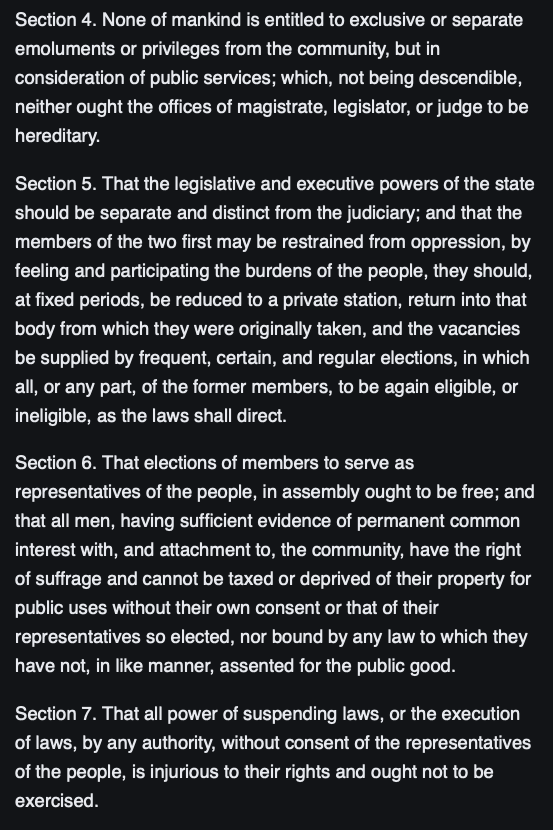AMERICAN ADVENT DAY SIXTEEN.
Today we will talk about George Mason, whose 1776 Virginia Declaration of Rights inspired the Bill of Rights.
1/7
Today we will talk about George Mason, whose 1776 Virginia Declaration of Rights inspired the Bill of Rights.
1/7

Mason was born in 1732 in Fairfax County; today it's a suburb of Washington, but when his ancestors settled there, it was the frontier. They were Cavaliers, rewarded for their Loyalty to the crown with land, and built plantations upon which they raised cash crops.
2/7
2/7
Without much infrastructure, most transportation in Colonial Virginia was by river, and his father died when his boat overturned in a storm when George was nine.
After years of private education, he inherited the family estates and responsibilities.
3/7
After years of private education, he inherited the family estates and responsibilities.
3/7
As one of the largest landholders in Virginia where political power was tied to property holdings, Mason became a Judge in Fairfax County, and took a commission into the county militia. In 1759, he was elected to the House of Burgesses.
4/7
4/7
By 1769, Mason had become frustrated with British policy, and drafted the state's Non-Importation Agreement, essentially a boycott.
As the situation escalated, Mason responded, authoring the 1774 Fairfax Resolves, which denied Parliament's tax authority over the colonies.
5/7
As the situation escalated, Mason responded, authoring the 1774 Fairfax Resolves, which denied Parliament's tax authority over the colonies.
5/7
In 1776, Mason authored the Virginia Declaration of Rights, posted here. Discerning readers will see how it presaged the Declaration, Constitution, and Bill of Rights.
"That all men are by nature equally free and independent and have certain inherent rights..."
6/7



"That all men are by nature equally free and independent and have certain inherent rights..."
6/7




Mason's writing framed the emerging American order, but he was also firmly rooted in principles. He had major disagreements with the Constitution, and refused to sign.
But that's a story for another time.
See you tomorrow: we will pay homage to Marquis de Lafayette!
7/7
But that's a story for another time.
See you tomorrow: we will pay homage to Marquis de Lafayette!
7/7
• • •
Missing some Tweet in this thread? You can try to
force a refresh













